In the evolving landscape of the accounting profession, training programs have become a cornerstone for staying competitive and adapting to industry changes. From standing out as an employer of choice for new recruits to creating a workplace where employees feel valued and supported in their career, learning opportunities represent a key strategic initiative. A persistent challenge for learning leaders has been measuring the return on investment (ROI) of these training initiatives. In this blog post, we will explore some reasons you should be measuring ROI for learning programs, delve into various models for evaluation, discuss challenges that make this analysis difficult, and identify cutting-edge software tools that can assist accounting firms in quantifying the impact of their training programs.
Why Measure ROI?
In broad terms, return on investment (ROI) is a performance measure used to evaluate the efficiency or profitability of an investment. In the context of learning and development, ROI is the value a firm derives from the learning activities it invests in. Measuring ROI for learning programs is not as straightforward as measuring ROI for an equity investment. Despite measurement challenges, which we will explore further, establishing a process for determining the value of learning to your firm is an important initiative for learning and development leaders. To maximize your firm’s learning program’s ROI, consider these four points
- Aligning Training with Business Goals: Measuring ROI is not just about assessing the success of training programs; it’s about ensuring that these programs align with the broader business goals of accounting firms. Whether the objective is to enhance technical skills, improve client interactions, or foster compliance with regulatory changes, clear alignment guarantees that training investments contribute meaningfully to the firm’s strategic objectives.
- Prioritizing Spend: Measuring ROI allows accounting firms to identify the most effective training programs and allocate resources strategically. Whether this involves the costs of developing training programs, working with vendors who bring a specialized skill set, or even the cost of lost billable time for facilitators and attendees, this optimization ensures that investments yield maximum returns in terms of skill enhancement and overall performance.
- Making a Case for Learning: Decisions makers often want tangible evidence of the value generated by training programs. Measuring ROI transforms abstract notions of training success into quantifiable data. When we lack tangible information about the success of learning programs, it can be more difficult to obtain budget allocation. Learning leaders can use ROI information to support their strategic initiatives.
- Enhancing Decision-Making Processes for L&D Leaders: The dynamic nature of the accounting industry demands swift and informed decision-making. Measuring ROI provides leaders with actionable insights. It allows them to refine strategies, identify areas for improvement, and make data-driven decisions regarding future investments in training.
Nancy Palmerin, Chief Learning Officer at Citrin Cooperman, concurs. “Over the past several years there has been a greater demand for analyzing the effectiveness of learning programs and aligning our offerings to the strategic initiatives of the firm. We take a multi-faceted approach to gathering data to support our decisions. Measuring ROI for learning is not as simple as comparing firm profit and cost of training. While firm profit and training cost are important considerations, there are other factors that affect the firm and individuals that play an important role in setting strategy. Our approach to analyzing our learning strategy includes use of learner surveys, conducting focus groups, reviewing compliance data, evaluating engagement performance and considering quality control reports along with profit and cost metrics.”
Various Models for Evaluating ROI
Traditionally, ROI is measured as the gain or loss on an investment divided by the cost. While this calculation may be very straightforward when we are evaluating the performance of a stock, it becomes a little trickier when we are talking about investment in people. The first key to determining ROI is to define how we will calculate the “gain or loss” on our investment. In other words, how do we define the success of a program and what is that success worth? There are several well-known models for measuring the ROI of learning programs that seek to help learning leaders evaluate their approach.
1. Kirkpatrick’s Four-Level Model: Donald Kirkpatrick’s model offers a comprehensive framework for evaluating training effectiveness at four levels:
-
- Level 1: Reaction (participant feedback)
- Level 2: Learning (knowledge and skill acquisition)
- Level 3: Behavior (application of learning on the job)
- Level 4: Results (impact on business outcomes)
For example, after a training session on new accounting software, Level 1 might involve participant feedback on the training’s relevance and effectiveness. Level 2 could assess the increase in participants’ knowledge and proficiency in using the software. Level 3 might include supervisor feedback on skills through formal or informal evaluations. Examples of Level 4 analysis could include quality control reviews, engagement realization metrics analysis or even employee retention metrics.
2. Phillips ROI Methodology: Developed by Jack Phillips, this model extends Kirkpatrick’s framework to calculate the ROI of training programs. It involves measuring:
-
- Reaction and planned action
- Learning
- Application and implementation
- Business impact
- ROI calculation
The Phillips model closely follows the Kirkpatrick model in the first four steps but adds a fifth step to create a quantitative analysis. There is no single metric in this step – firms should find the metrics that align most closely with their business and learning program goals. For instance, after a training program on tax law updates the learning team could assess the participants’ reactions to the program, track their application of the acquired knowledge through surveys or through a business intelligence software, and then calculate the financial impact on the firm’s tax services using cost and revenue information.
3. Success Case Method (SCM): Developed by Robert Brinkerhoff, the SCM model focuses on identifying and analyzing successful cases where training has had a significant impact. The process involves:
-
- Identifying success cases
- Analyzing factors contributing to success
- Generalizing success factors for broader application
In the context of an accounting firm, this could involve identifying instances where a specific training program led to a noticeable improvement in client satisfaction or a reduction in errors. The Success Case Method is most often used when piloting a new learning program and presenting findings to decision makers.
4. ROI Dashboard Approach: Create a customized ROI dashboard that aggregates key metrics and KPIs related to training programs. This approach involves regularly updating the dashboard with data such as participant feedback, skill improvement percentages, and business outcomes. Tools like Tableau or Power BI can be utilized for creating dynamic and visually appealing dashboards.
Challenges in Measuring ROI of Accounting Learning Programs
Accounting firm leaders appreciate the data that an ROI calculation provides. However, creating a full picture of the costs and benefits of learning programs can be challenging. When discussing this topic with L&D leaders at accounting firms, the top three reported challenges are:
- Getting the data: Learning programs often do not have a clear and direct link to quantitative data, like revenue growth. It can be hard to isolate the effects of programs on business initiatives. Likewise, firms often struggle to gather timely and accurate feedback from learners, supervisors and business leaders. In situations where firms lack data, they often rely on anecdotes or individual opinions, which may not reflect the true effectiveness of a learning program.
- Intangible benefits: Learning programs do more than just support revenue growth. They are an integral part of a firm’s culture that affect the wellbeing of employees, job satisfaction, inspire innovation and provide opportunities for interpersonal connection. Focusing on quantitative analysis can neglect these important impacts.
- Lack of defined goals: Learning leaders can be challenged to organize programs that align with the business goals, when those goals are not clearly defined and communicated. Functional practice areas may have differing goals but draw from the same learning budget. If leaders are not aligned on goals, an ROI calculation does not support decision making.
Software Tools for ROI Measurement
The market is saturated with tools that can be used to evaluate learning program effectiveness and measure ROI. Common tools used by accounting firms include:
- Learning Management Systems (LMS): Implementing a robust LMS, such as Cornerstone or LCVista, is fundamental for tracking learner progress, completion rates, and assessment scores. These systems often come equipped with analytics features that facilitate the measurement of ROI. Current LMS systems may also include feedback and performance management functions as well.
- Survey and Feedback Platforms: Platforms like SurveyMonkey or Qualtrics play a crucial role in collecting participant feedback. These tools offer advanced analytics features, allowing for a deeper understanding of participant perceptions and the overall effectiveness of the training. Consider structuring surveys to gather both real-time and long-term transfer of learning concepts.
- Employee Performance Management Tools: Tools like PeopleSoft or Sage HR enable organizations to set performance goals, track progress, and evaluate outcomes. Integrating these tools with learning and development data provides a comprehensive view of the impact on individual and team performance.
- Business Intelligence (BI) Software: BI tools like Tableau, Power BI, or QlikView are instrumental in creating interactive dashboards that consolidate data from various sources. These tools enable stakeholders to visualize and analyze the ROI of training programs in a user-friendly format.
Nancy Palmerin, Chief Learning Officer at Citrin Cooperman, reports, “Implementing Power BI to create scorecards for our teams has been transformative in how our learning team uses data to set strategy. We have a multi-faceted approach to designing our learning curriculum, but the advancements in software to help us gather, report and analyze data has been a game changer.”
Conclusion
Measuring the return on investment in training programs for accounting firms is not just a financial exercise; it’s a strategic imperative for sustainable growth. By aligning training with business goals, prioritizing your learning budget, supporting strategic initiatives, and enhancing decision-making processes, accounting firms can ensure that their training investments contribute significantly to the firm’s success. Utilizing various evaluation models, along with advanced software tools, empowers firms to navigate the complex landscape of training program measurement, providing clear insights into their impact on individual skills and overall organizational performance.
YOU MIGHT ALSO LIKE:
Published On: January 30, 2025



